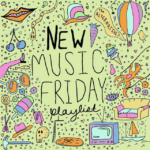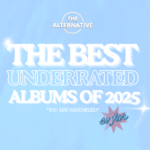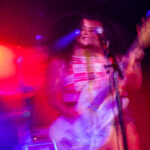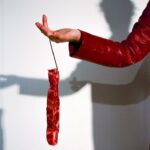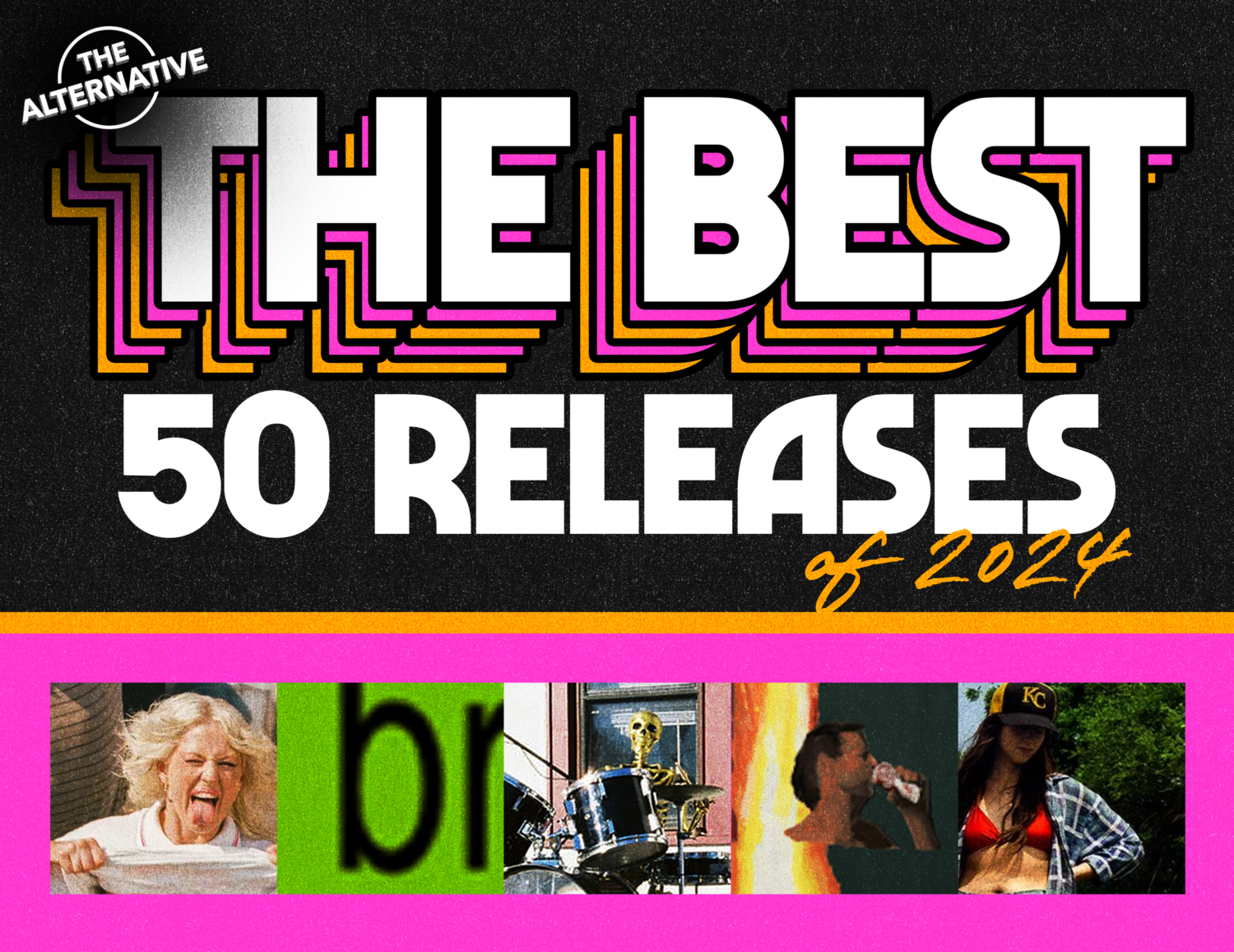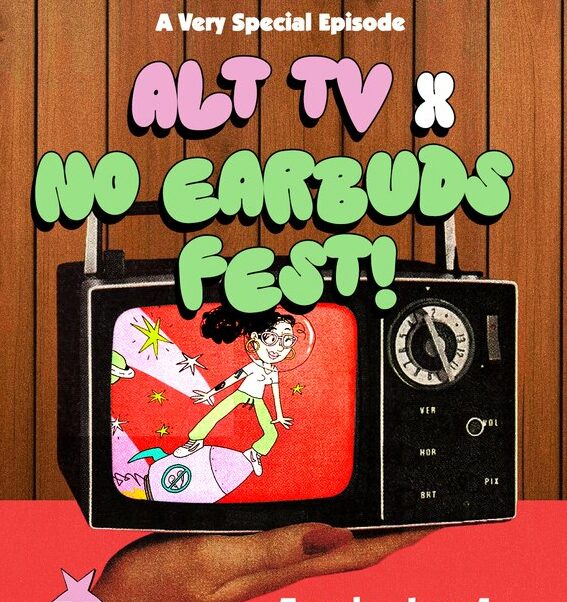The Alternative Guide to Being Safe (And Having Fun) At Live Shows
Posted: by The Alt Editing Staff
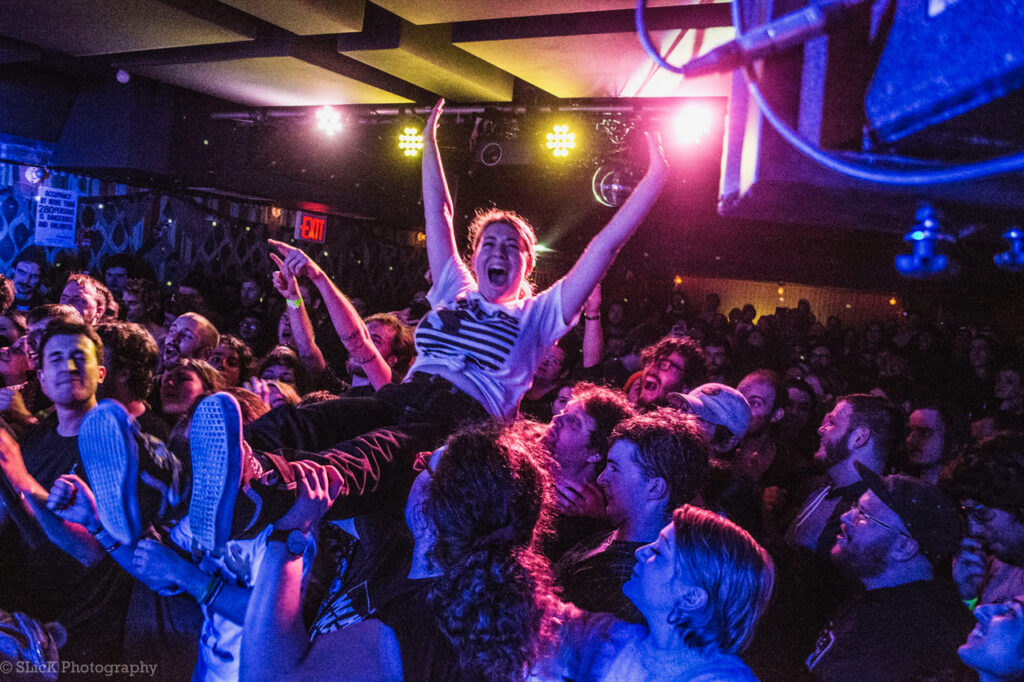
Tips for getting the most out of concerts, from people who live for all things live.
The first big festival I went to after getting vaxxed was Riot Fest in 2021. I spent three days under the blazing late-summer Chicago sun moshing to Devo and headbanging to Andrew WK, chowing on foot-long corn dogs, and enjoying a feeling of bliss about the return of in-person concerts after over a year of pandemic-related restrictions. The crowd vibes were high, the artists onstage all seemed grateful and energized to come back after the long absence of live music, and I left Douglas Park each night feeling content—minus some lower back pain that, being in my thirties, I will simply charge to the game.
To me, my Riot Fest experience was the most idyllic vision of what live music should be right now: a communal experience with music and people where the energy you put into it comes back to you safely and sanely, and you leave feeling fulfilled and not depleted. I feel extremely passionate about concert safety, and after seeing many recent anecdotal instances of concert mishaps (people passing out, getting injured, having stuff stolen) I thought it would be nice to create a guide to having as good a live show experience as possible. So I solicited stories, tips and tricks from avid concert-goers, which I’ll share below along with some of my own accumulated from two decades of going to shows.
One last caveat before the guide begins: attending a live show is always a calculated risk, and the responsibility doesn’t just fall on the individual attending. Infrastructure and security play a huge role in the safety of concertgoers, and sometimes disasters happen that are way beyond any one person’s control. This guide is simply meant to help individual people make individual choices that can hopefully mitigate some worst-case scenarios, and keep you hydrated, alert, and happy, whether chilling in the back or going apeshit in the pit. Now let’s get to the tips.
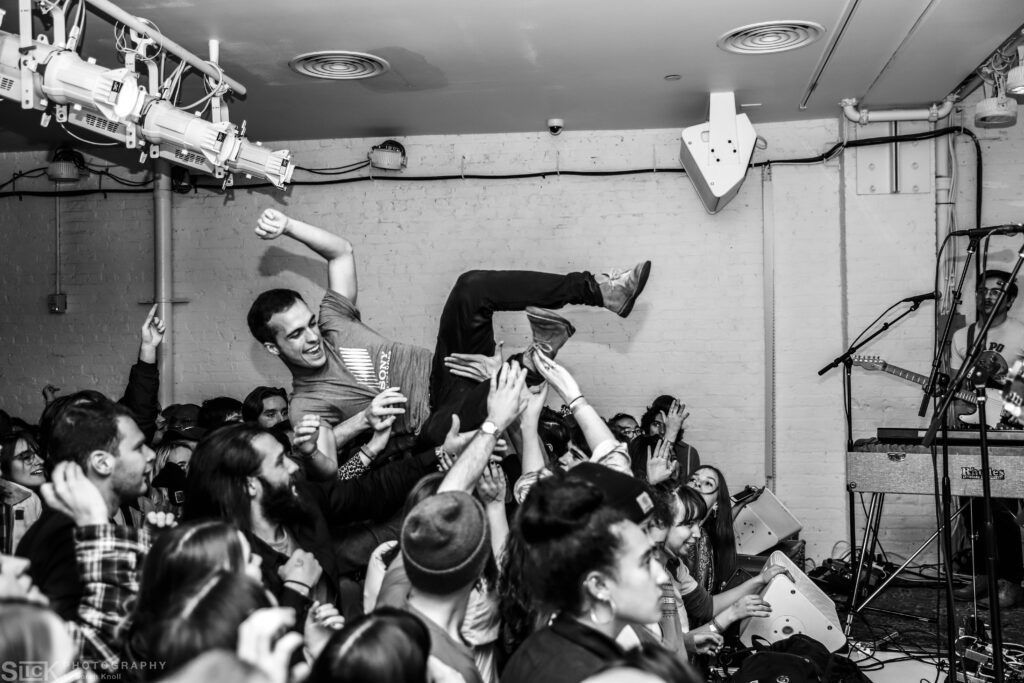
Dress for success
You can set yourself up for a great show before you even leave your house by wearing proper concert attire. Connor Zaft, a NYC resident and fan of “pretty much anything loud” music-wise, shouted out appropriate footwear as extremely important to the concert-going experience, recommending shoes that are “comfortable and bulky and stable. You could be on your feet for 30 minutes or two hours. You might be standing around in silent droning contemplation and then get hurled across the floor 2 seconds later, so they need to stay on and stick to the ground and ideally cushion the blow when some brick wall of a human being stage-dives into you.”
Luis Silva, a veteran of “early 2010s Primaveracore” shows, shared the importance of specifically weather-proof shoes: “I bought a pair of boots for my first three day festival where traditionally there was always a day with rain, and while I dodged out of that one, on a later festival it rained so much the tent stage was half flooded and almost everyone with their canvas shoes had to move to the side, as I calmly was in the middle of the puddle.” Shoes that can handle puddles can also probably handle spilled beer.
No matter how sweet they look, never wear your nicest shoes to a show, unless you are ready for it to be their last hoorah. In fact, for outdoor shows, it might be better to wear shoes you were planning on throwing away soon anyway, just in case.
As for bags and other possessions? Luis advised to “avoid single-strap bags, but if you can’t, wear them to the front, and under a jacket or overshirt (but maybe not directly on your skin) so nobody accidentally gets caught up on them.” He recommends bringing a carabiner that can be looped on a belt loop to wrangle your keys, and for good measure, to keep an eye on your belt buckles: “If you are pressed against certain types of barriers, they can easily chew up your clothes.”
Festivals in particular are primetime for pickpocketers, so it’s never a bad idea to keep an extra eye on your phone and other valuables especially if you’re going to a large-scale, crowded event. Putting phones in back pockets or easy-to-burgle backpacks isn’t advisable—the humble fanny pack will at least keep your stuff facing front, and a Flipbelt is often recommended as an anti-theft solution at large electronic music festivals where pickpocketing is especially common. Pocket-vigilance is twice as important when you’re in a foreign country. Feel like talking to security or police who don’t speak English? How about losing your passport and spending the rest of your time in an embassy office so you can travel home? Be extra careful with your items (especially your passport) when you’re seeing shows abroad.
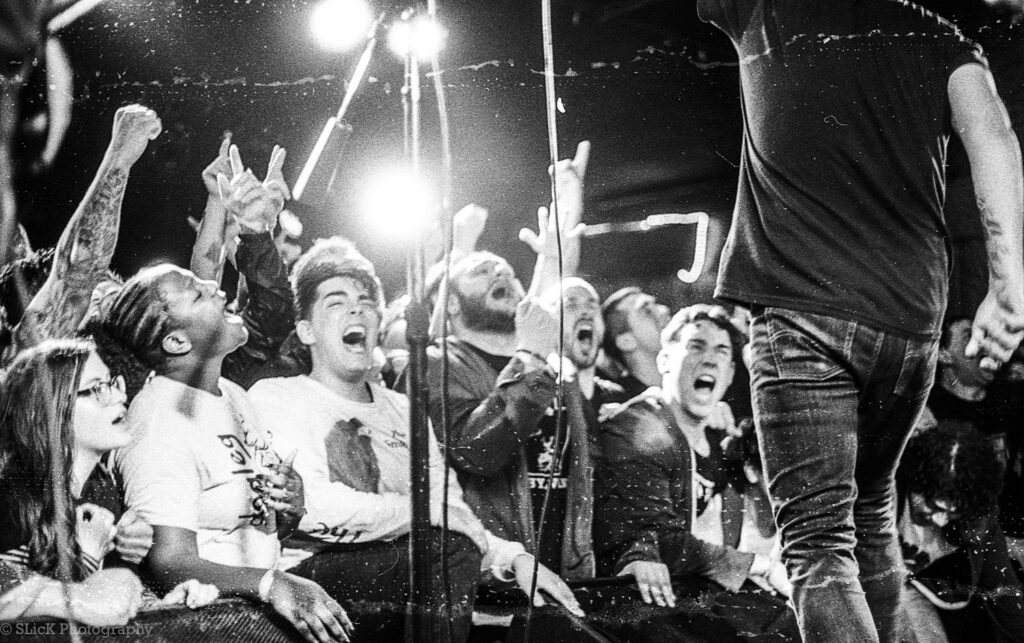
Plug yr ears
Concerts are usually very loud and they are often very long. Sustained exposure to high volumes will damage your ears and there’s no way around it. Almost everyone I interviewed shouted out earplugs and I will do the same. Shell out for a nicer pair, and keep a junk pair in your wallet at all times just in case. If you forgot ‘em at home (it happens), keep an eye out for the cheap foam ones at the venue’s merch table or bar. If you lose your hearing, you won’t be going to too many more shows, and you will definitely regret it.
Stay fed and watered
This may seem obvious, but you will not be able to mosh, bop, crowd-surf, or remain conscious while squished against the rail if you are undernourished and dehydrated. Music writer and Indieheads Podcast co-host Natalie Marlin recalled a rough scene at this past year’s Pitchfork Fest: “They had to stop Japanese Breakfast’s set like three or four times because people, who had been camping out, were passing out from dehydration and exhaustion.” Jill Choi, a veteran of Mitski show front rows, has witnessed similar critical failures: “The number of people I’ve queued with who went water/snackless then proceeded to pass out in the pit is astounding.”

The real hero.
I’m a Known Fainter who has passed out everywhere from third-grade basketball camp to the New York City subway, so I’m always on the highest setting of vigilance for blood sugar mishaps. A meal with a balance of carbs and protein has never done me wrong for a long day at a festival or a night at a rock show. Drinking alcohol at the show? EAT SOMETHING FIRST.
Steve Roberts, a longtime show-goer and former venue manager, shared an underrated tip for staying lively at shows: keep an eye on the time. “It’s hard to keep track of time at a festival or an indoor show. It’s loud, you’re watching your favorite band, and especially at festivals, if you’re drinking or if you’re doing drugs, you can really easily lose track of time. You need to know, okay, I’ve been in this spot for an hour. I probably need to go get a drink of water or something.”
As for water, if you’re at a smaller venue, keep an eye out for the hero of any DIY show: the huge jug of free water at the end of the bar. Natalie also recommended keeping an eye out to see if security at the front of the show might have water stashed behind the barricades if you’re at a larger and want to stay close to the action. And though the Liquid Death brand of water has been the subject of spirited debate at The Alt’s staff meetings, they are increasingly becoming the default water brand at festivals and I personally am a big fan of their big can.
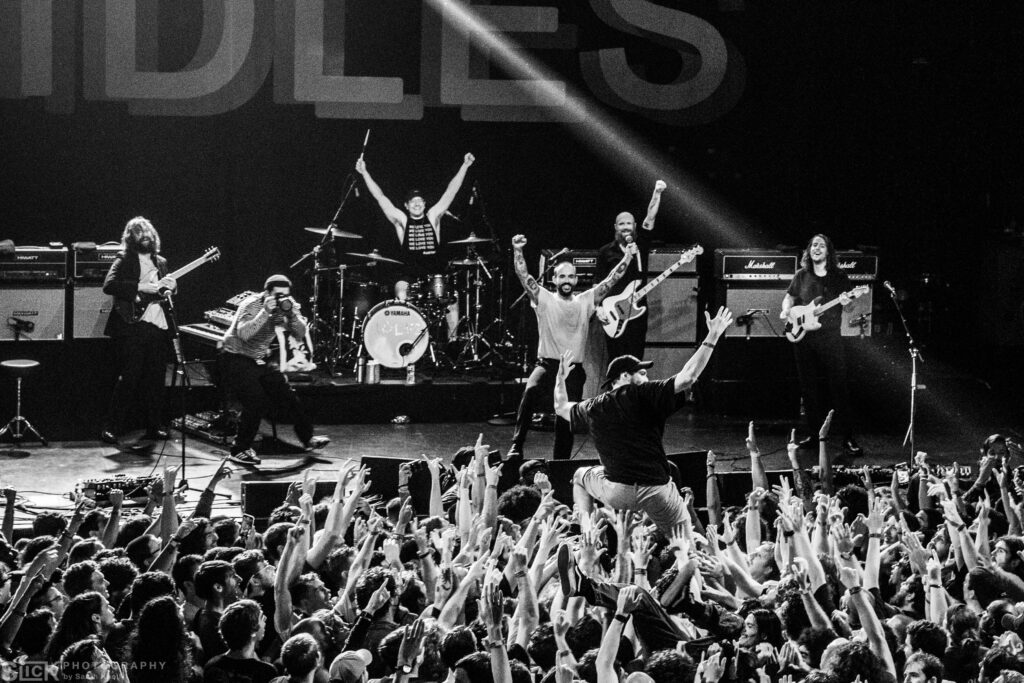
Space is the place
You can definitely set yourself up for a happy show with a bit of strategic awareness of the space you’re in. Steve will take a quick scan of whatever venue he’s in when he arrives: “I’ll do a lap through the place to figure out where everything is: the stage, the fire exit, the bathrooms.”
Next step is figuring out where to stand. If you want an intense experience without getting thrashed in a mosh pit or kicked in the back of the head by a crowd-surfer, Elliot Imes, an Iowa resident who has been attending shows since first seeing Fishbone in 1998, suggested splitting the difference. “I recommend front row, side stage,” he said. “Most of the crazy action is going to be happening in the middle. If a mosh pit happens to break out, it won’t be up against the wall. You might be hearing much more of either the guitarist or the bassist, but if the band is truly killing it, that shouldn’t matter.”
“Spatial awareness is everything.”
Bird, photographer and co-runner of Knifepunch Records, asserted “spatial awareness is everything,” especially when they’re taking photos at shows. “Often, I’m carrying vintage camera equipment that I need to protect, so I keep an eye on my surroundings while staying close enough to the band for some good photos. I keep an arm up to protect my head and move around to spots where I’m less likely to catch a kick. Smaller shows are great because I try to make friends with as many people as I can there and they know I’m shooting film, so they’re usually mindful of that.”
Hoping to queue at the rail for your favorite band? Prepare for extra intensity. Front-row veteran Jill: “Honestly when it comes to getting to the barrier for a close view, you kind of have to put your pride aside because if you’re seeing a popular artist, you have to run to get up front first.” Moods at the front can often become strained as claustrophobia mixes with heightened femotions. Ultimately, “there’s no boon to being unnecessarily antagonistic towards a bunch of strangers you’re going to be in close proximity to for the next two or so hours.”
In super-crowded, hard-to-move-around concert situations, I’m personally a huge fan of making strangers in the crowd your allies for the night via a simple verbal check-in. You don’t have to strike up a full conversation, but a quick scan of the people in your immediate vicinity and a quick nod and a “Hey, you doing good?” can create connections you can lean on if things go sour for whatever reason.
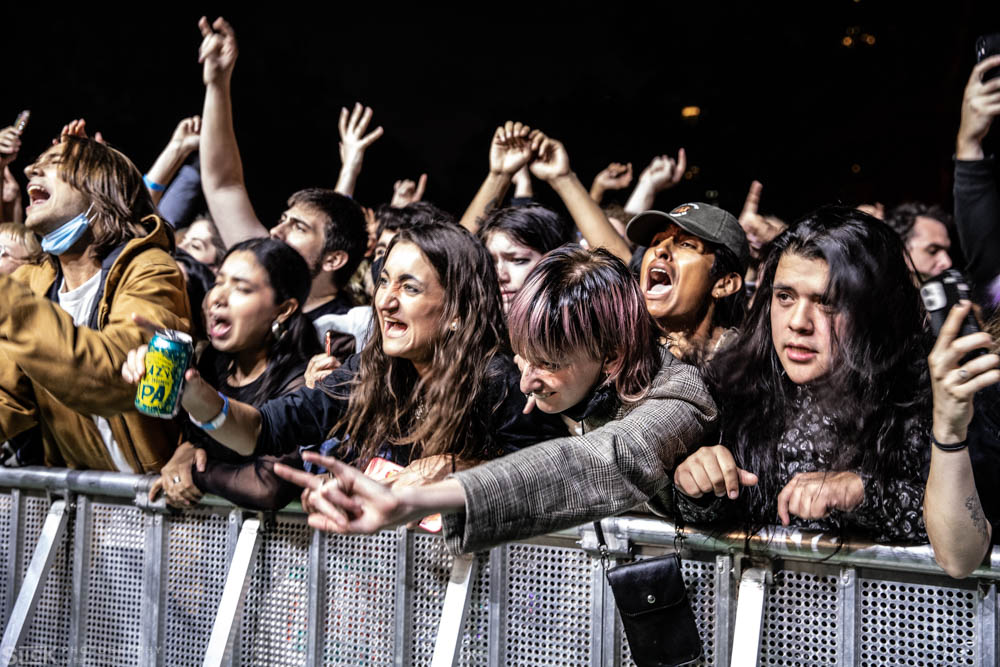
Pics or it didn’t happen
A special “how to co-exist safely with photographers” dispatch from The Alt photo editor Sarah Knoll
From a photographer’s perspective, going to shows can be an absolute blast or an absolute nightmare. Unlike the crowd members, we have a job to do, and for many photographers this is their livelihood. I don’t speak for all photographers, but from my experiences, the one thing I look for is respect for the craft. Make sure you’re giving the photographers the space they need to get in and get out. Typically we’re only allowed to shoot for the first three songs, so if you can give a little room for us to do our thing, the remainder of the set should be a blast. As a shorter person, it is nice when you’re giving us some space to actually be able to see the stage, especially when the venue has no barrier. If you are gifted with ample height, please let us shorties go towards the front, thank you!
On that note, if you decide to crowd surf, PLEASE, look at where you’re going. If you see a person with a camera, aim to get away from the photographer. The worst is getting bunked on the head with your own equipment or having to duck for cover just to protect yourself and your equipment. Since we’re typically towards the stage or right up against it, try your best not to hurl yourself towards us. I know that the pit can be unpredictable, but some common courtesy is always appreciated. Our job is to get some badass photos, and anything the crowd can do to help us achieve that goal is always amazing.
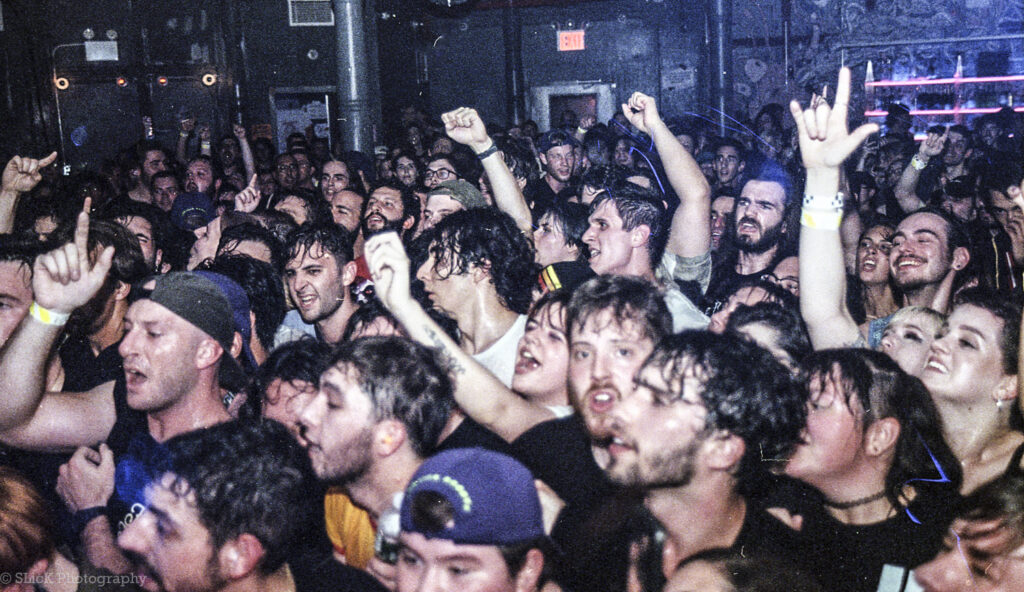
Get in the pit (safely)
Maybe you’re ready to get rowdy in the pit. Hell yeah. You’re probably already aware of the physical risks and basic etiquette of moshing — pick people up when they fall down! Use shoulders, not elbows! Ask if someone’s okay if you accidentally whack them in the face! — but our experienced moshers have extra advice to offer.
First, keep in mind that not everyone in the pit might have safety on their minds even if you have it on yours. Steve’s take: “You have to remember that people are going in the pit to not be safe. The idea is to make it feel like something’s getting out of hand.” In situations where people are indeed getting out of hand, look out for yourself accordingly (and look out for others too – more on that in a bit).
Elliot advised against forcing a mosh pit against a crowd’s will: “If a mosh pit is going to happen, it will occur organically. What I can’t stand is when the band is like three songs into the set, clearly no moshing is going to occur, but one or two dinguses decide THEY will be the ones to convince everyone it’s time to slam into each other!” His recommendation for finding fun in a mosh-less space? “If no one around you is moving much, then you really have to respect their space. This is when I do my Stationary Bounce – not quite pogoing, just more of a rhythmic full-body head banging. I did this during basically an entire Jeff Rosenstock set last summer, and I don’t think I came into significant contact with anyone who didn’t want me to. You can have your own private mosh pit, and your glasses will never be in danger of getting broken.”
“You can have your own private mosh pit, and your glasses will never be in danger of getting broken.”
Good pits rely on communication and collaboration to keep going safely, so keeping some level of external awareness even while you’re mid-thrash is crucial. I’ll never forget a pit at an Oh Sees show in Brooklyn stopping cold so that a person could find their phone; in the span of seconds, a roiling mass of humans turned into a phone-flashlight-assisted search party before reverting back to its original chaos after the phone was found safe and sound. That’s punk rock, baby!!
At the end of the day, a pit is a clash of individual wills that creates a cumulative energy, and there might be some friction that results. Connor shared great advice on managing expectations for a show where many different people are bringing different vibes to the forefront. “I try to remember this is a collective experience, and someone else might have a very different way of appreciating this art form, and that the discomfort in that difference is part of it,” he says. “The obvious thing about heavy music is that it’s sort of a mass exorcism. Most people come because it’s fun as hell, a lot come out to deal with something. That can look angry and loud or quiet and still and it’s all good.”

Look out for one another
While you’re at a show to witness one or more musicians perform live music on a stage, the interactions that happen within the crowd are a huge part of the show experience, and a bad crowd interaction can spoil the whole night. Almost every music fan has a story about a show that was ruined by someone drunkenly screaming in their ear, standing in their way, being creepy, or worse. The goals are to not be that person, and to not have your time ruined by those people. Self-awareness along with awareness of yourself as a part of the collective audience experience can make the difference between a great show and a shitty one.
“Harassment can completely fuck with a show’s energy”
After a run in with a particularly nasty pit at a Queens of the Stone Age show, Natalie now “tends to gravitate less toward the folks that have what I would consider bad vibes—anybody who gives off a sort of antagonistic energy.” Moreover, she keeps an eye out for others who are in vulnerable positions. “If I see somebody is getting pushed a lot by the crowd behind them or maybe getting harassed by one of the dudes in the crowd, I’m that person who constantly is checking in and being like, ‘Are you okay?’ As somebody who has been transitioning, I’ve occasionally been on the receiving end of [harassment] and that can be something that can completely fuck with a show’s energy.”
Bird echoed the importance of looking out for others: “Often the people who are hurting others or crossing boundaries are too drunk and fucked up. Catching a weird touch from a really drunk man at a show is unfortunately not uncommon. If it’s happening to me and security is nowhere in sight, I’m just throwing elbows and fending for myself. If I’m with my friends, I count on them to step in and help. And I’ll always do the same for them. If everyone takes a little responsibility by being aware of what’s going on around them and not ignoring situations, it would go a long way to collectively improving the experience.”
Go forth and rock (safely).
There you go: all of our live show tips (for now). Go to all the shows and have a great time. Let the bass rattle your sternum and the distortion turn your brain into gazpacho. Vibe out at the back of the crowd or rage at the front. Just please be considerate, pay attention, drink water, and you’ll set yourself up for a lifetime of positive concert experiences.
Written by Molly Mary O’Brien with contributions from Henderson Cole and Sarah Knoll. All photos by Sarah Knoll.
The Alternative is ad-free and 100% supported by our readers. If you’d like to help us produce more content and promote more great new music, please consider donating to our Patreon page, which also allows you to receive sweet perks like free albums and The Alternative merch.

